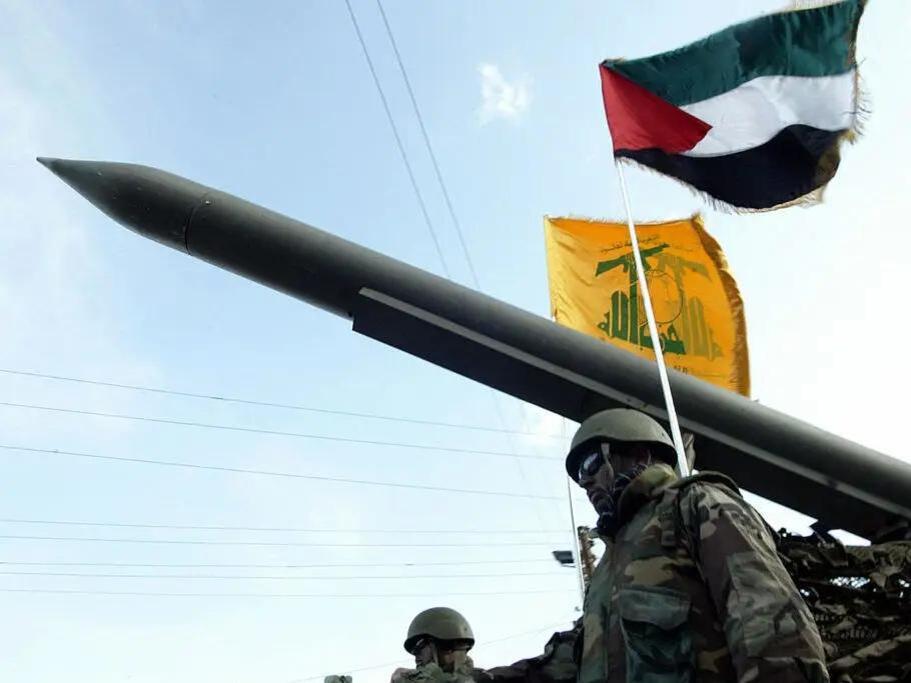Physical Address
304 North Cardinal St.
Dorchester Center, MA 02124
Physical Address
304 North Cardinal St.
Dorchester Center, MA 02124

Clashes between Israel and the Lebanon-based militant group Hezbollah are escalating, signaling a potential shift in tactics inspired by Russia’s strategies in Ukraine.
Military experts predict that Hezbollah may adopt aggressive measures similar to those utilized by Russian forces, such as launching swarms of drones and mass missile strikes aimed at Israel’s air defenses. This shift in strategy could see Hezbollah targeting critical military bases, ports, and even the electrical grid of Israel.
The current tension comes on the heels of Israel’s most deadly single day of attacks on Lebanon since 2006, with Lebanese health officials reporting 558 fatalities and thousands displaced due to Israeli strikes.
Speculation about an impending ground invasion of southern Lebanon by Israel is growing. However, analysts caution that Hezbollah has evolved into a more formidable and sophisticated force compared to previous conflicts, indicating that any Israeli advance may be met with significant resistance.
Assaf Orion, a retired brigadier general from the Israeli military, emphasized the potential consequences of escalation, stating, “It’s not going to be a walk in the park. There’s no way we’re not getting a bloody nose.”
Reports suggest that Hezbollah has amassed a substantial stockpile of missiles, with estimates ranging from 120,000 to 200,000. Experts believe that these missiles could enable Hezbollah to strike deep into Israeli territory, targeting roads, military installations, and airfields.
Mesrob Kassemdjian, a teaching fellow at the Department of Politics and International Studies at SOAS University of London, noted that these strikes could occur as part of a prolonged barrage combined with drone swarms. This strategy could challenge Israeli defenses, particularly the Iron Dome system, leaving Israel vulnerable to serious attacks.
American and Israeli officials have expressed concerns that Hezbollah could successfully penetrate the Iron Dome’s defenses, especially during a large-scale, precision-guided missile assault. This concern mirrors the Russian approach to attacking Ukrainian cities and infrastructure with mass missile and drone strikes, often overwhelming Ukrainian defenses in the process.
Analysts suggest that Hezbollah has likely incorporated lessons learned from its collaboration with Russian forces in Syria. A report by The Washington Institute for Near East Policy highlighted that Hezbollah has gained insights into conducting offensive maneuver warfare, a tactic employed by the Russian military.
The Kremlin’s support for Hezbollah and similar groups is seen as part of a broader strategy to counter U.S. influence in the Middle East by bolstering adversarial forces. This strategic alignment has been underscored by the U.S. government’s recent assertions regarding potential support from the Russian Wagner mercenary group, including the possible supply of Russian Pantsir-1 air-defense systems to Hezbollah.
The current conflict between Israel and militias with ties to Iran began on October 7, when Hamas carried out aggressive attacks against Israel. In response, Israeli forces launched an invasion of Gaza, while Hezbollah initiated missile assaults on northern Israel in solidarity with Hamas. As tensions rise, the U.S. has solidified its support for Israel, and Russia has reinforced its commitments to its regional allies.
The Washington Institute has observed that since the October 7 attacks, Russia has entrenched its alignment with destabilizing forces in the Middle East, reinforcing its commitment to counteracting U.S. power.
As the situation evolves, both Hezbollah and Israel face challenges that may lead to further escalation and casualties on both sides, emphasizing the complexity of the region’s ongoing conflicts.
Source: Business Insider



